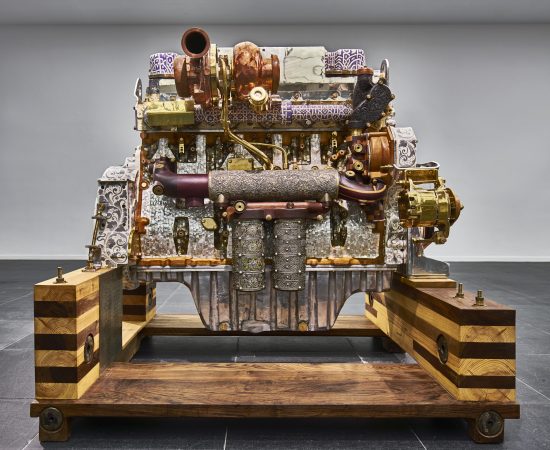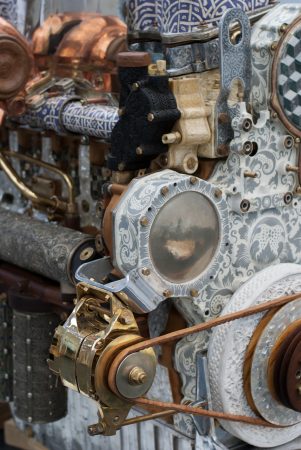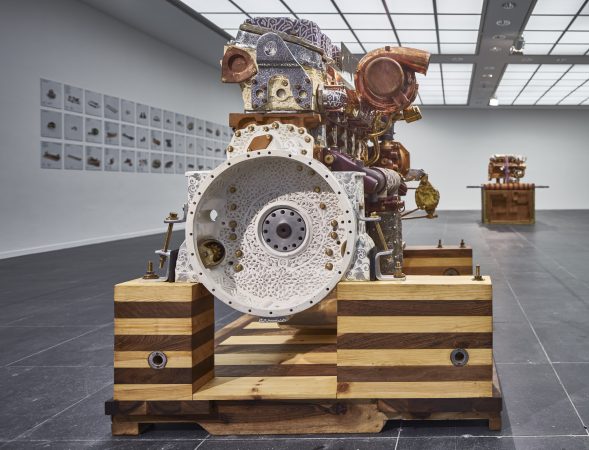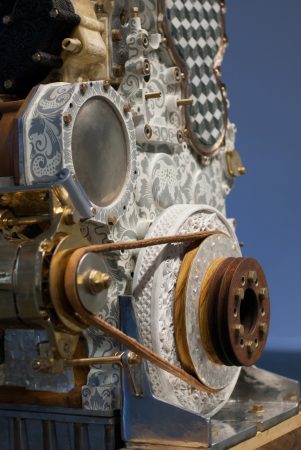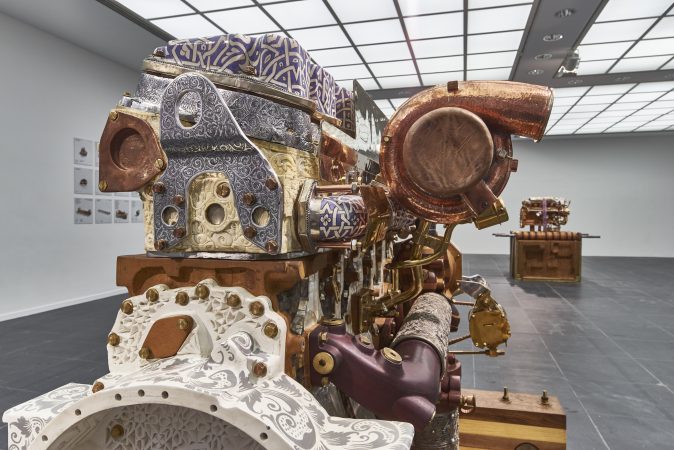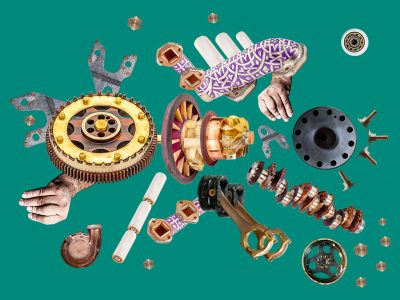Eric van Hove
D9T (Rachel’s Tribute), 2015
Mixed Media, 44 materials including Middle Atlas white cedar wood, High Atlas red cedar wood, walnut wood, lemon wood, Purple Heart wood from Brazil, Wenge wood from Congo, Tatajuba wood from Suriname, orange wood, Macassar ebony (dark Thuya wood), mahogany wood, Thuya wood, Moroccan beech wood, pink apricot wood, mother-of-pearl (Japing shells) from Java, yellow copper, red copper, forged iron, recycled aluminium, nickel silver, silver, tin, cow bone, goat bone, camel bone, malachite from Midelt, agate, green onyx, tiger’s eye, Taroudant stone, sand stone, fibrous gypsum selenite (stone), red marble from Agadir, black marble from Ouarzazate, white marble from Béni Mellal, pink granite from Tafraoute, goatskin, cowskin, lambskin, resin, Ourika clay, terra cotta with vitreous enamel, paint, cotton, orange flower oil
160 x 160 x 132 cm, 800 kg
Courtesy the artist
The sculpture D9T (Rachel’s Tribute) is a replica of a C18 ACERT engine from the Caterpillar bulldozer D9T. With 474 hp the Caterpillar D9 is one of the heaviest and most powerful products by the Caterpillar Tractor Company. Eric van Hove refers to the D9T, the newest version of the engine, which has been in production since 2004. Despite being primarily used on construction sites, various D9 bulldozers were used in war zones, such as Palestine, not only to clear battlefields of debris, mines and damaged infrastructure, but also to level enemy fighters and alleged terrorist families in their houses. The machine was also used for military actions in Israeli settlements and the Vietnam War. Eric van Hove dedicates this work to American activist Rachel Corrie, who was hit and mortally wounded in Gaza in 2003, when trying to thwart the destruction of a Palestinian house by a D9 Caterpillar named Teddy Bear deployed by Israeli forces. An international team of forty Moroccan and five Indonesian craftsmen created the object, combining materials and specific expertise from both cultural contexts. Van Hove dismantled the original engine into all its parts in a process of analogue reverse engeneering. The sculpture consists of 300 true-to-scale component parts, made from more than 400 different materials. Each of the pieces was individually reproduced as a replica by artisans using materials unsuitable for mechanical engineering, but traditional in applied art because of their respective aesthetic and sometimes olfactory qualities.

